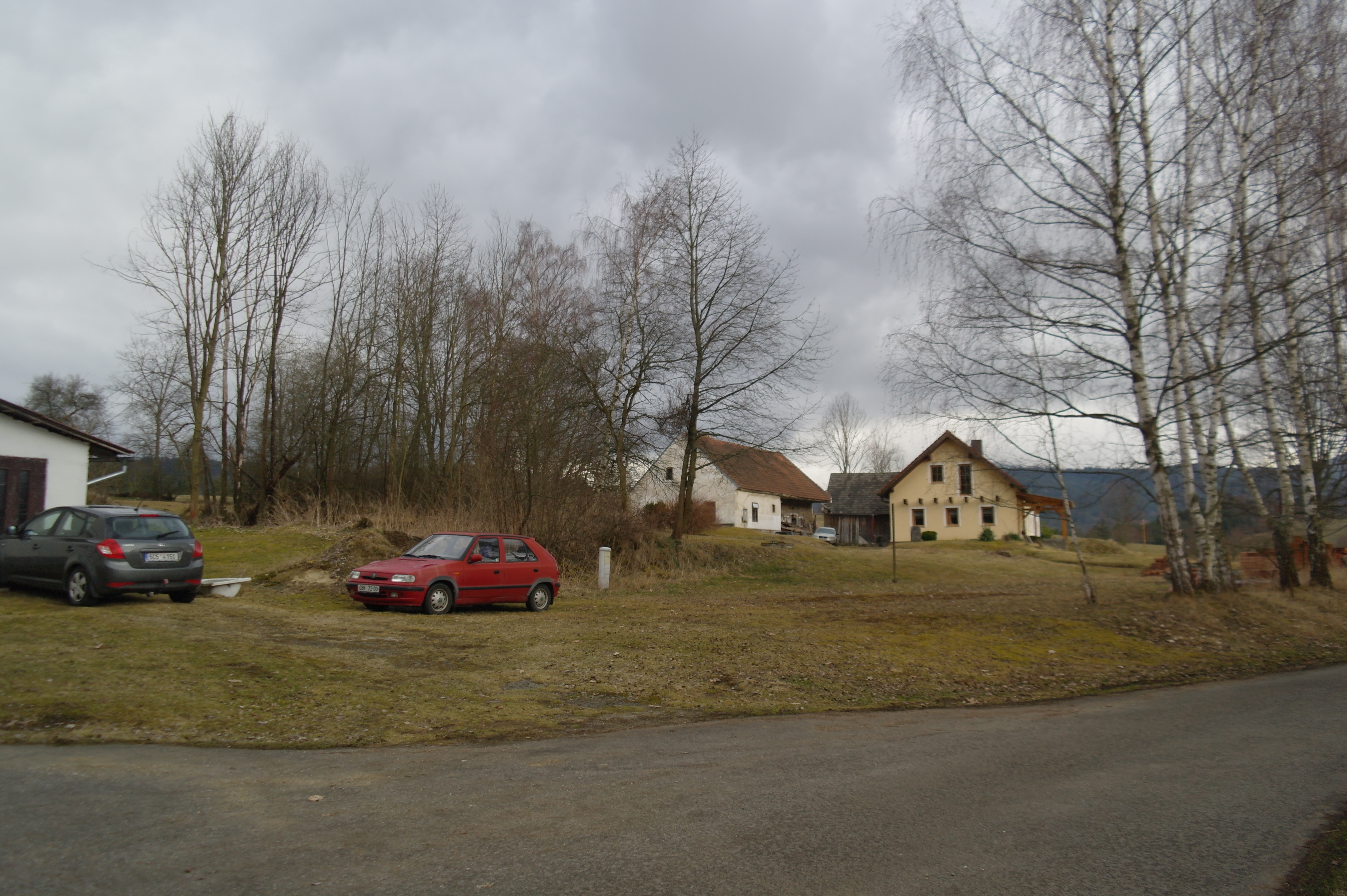Graffiti
(Reminds me of Shakespeare's "Carpe Diem"
O mistress mine, where are you roaming?
O stay and hear! your true-love's coming
That can sing both high and low;
Trip no further, pretty sweeting,
Journey's end in lovers' meeting--
Every wise man's son doth know.
What is love? 'tis not hereafter;
Present mirth hath present laughter;
What's to come is still unsure:
In delay there lies no plenty,--
Then come kiss me, Sweet and twenty,
Youth's a stuff will not endure.
-William Shakespeare)
Sweet Dream O' Child
God's Precious Gift
Child of love, child so bright,
child whose beauty out shines the light.
Angels sing from up above,
gracing baby Lickliter with all their love.
(Velmar Pewee Hale Johnson)
Child of love, child so bright,
child whose beauty out shines the light.
Angels sing from up above,
gracing baby Lickliter with all their love.
(Velmar Pewee Hale Johnson)
Sleep, sleep, my little one
Remember even the best
Most take a daily rest!
(from "sleep My Little One" by Sylvia Chidi)
My kiss will give peace now
And quiet to your heart -- -
(from "Sleep Now O Sleep Now" by James Joyce)
....In the night of weariness
let me give myself up to sleep without struggle,
resting my trust upon thee....
(taken from "Sleep" by Rabindranath Tagore)
Sweet dreams form a shade,
O'er my lovely infants head.
Sweet dreams of pleasant streams,
By happy silent moony beams
Sweet sleep with soft down.
Weave thy brows an infant crown.
Sweet sleep Angel mild,
Hover o'er my happy child.
Sweet smiles in the night,
Hover over my delight.
Sweet smiles Mothers smiles,
All the livelong night beguiles.
(taken from "A craddle Song" by William Blake)
Salahuddin al Ayyubi
Sejak lama saya menyukai tulisan-tulisan Goenawan Mohammad di Majalah Tempo. Berikut ini saya sajikan salah satu tulisannya tentang Saladdin atau Salahuddin al Ayyubi, salah satu tokoh yang juga saya kagumi.
Saya coba mendoakan arwah Saladin di depan makamnya, di sebuah ruangan di belakang Masjid Umayyah yang berumur lebih dari 12 abad itu di Damaskus. Tapi konsentrasi diri saya rasanya tak betul. Barangkali sesuatu telah mengganggu hati saya. Makam itu - makam orang yang termasyhur dalam sejarah itu, orang yang besar jasanya itu, orang yang dipuji bahkan oleh musuh-musuhnya itu - terasa kusam. Seperti kesedihan yang dicoba disembunyikan, ruangan itu kelabu. Sebuah kubur dengan nisan yang tinggi tapi hanya tampil serasa kayu lapuk, logam yang aus. Sebuah ruang sekitar 4 X 6 meter, yang seperti kamar yang kehilangan peminat. Warna-warnanya hambar. Cahaya pudar. Sawang tebal. Debu. Orang tak akan tahu dengan segera bahwa di sinilah Sultan Saladin, pahlawan Islam dalam Perang Salib, terkubur. Hanya sebuah gambar kertas yang buruk - mungkin wajahnya - tergantung di dinding.
Makam memang tidak untuh dijadikan ruang pameran. Kubur memang hanya pertanda kesementaraan kita - juga keterbatasan seorang pahlawan. Tapi tidakkah manusia perlu berhenti sebentar dan mengenang? "Kenanglah segala yang baik," kata sebuah baris Chairil Anwar, "dan cintaku yang kekal." Tidakkah masa lalu punya sesuatu yang kekal, yang bisa diwakili dengan sebuah tanda, sebuah simbol, dengan sikap yang hormat?
Saya mencoba berdoa di depan makam Saladin di Damaskus, untuk arwahnya, juga untuk apa yang baik dalam sejarah - tapi saya merasa ada sesuatu yang meleset dalam ruang ini. Melangkah keluar, berjalan kembali ke lapangan terbuka di halaman dalam masjid, saya dengar suara penziarah-penziarah Syiah meraungkan tangis, di dekat peninggalan Hussein yang gugur di Kerbala berabad-abad yang lalu. Di tembok-tembok tinggi, masih tersisa bekas-bekas lukisan gaya Byzantium.
Masa lalu memang tidak mudah pergi meskipun kita seperti tak ingin menengoknya. Bahkan di salah satu tembok Masjid Umayyah yang dulu adalah Katedral Yahya Pembaptis yang dipermak jadi masjid yang indah di tahun 700-an itu, seorang sejarawan masih menemukan sisa inskripsi ini: "Kerajaan-Mu, ya, Kristus, adalah kerajaan abadi...."
Tapi jika masa lalu tak mudah pergi, dari bagian manakah dari Saladin yang akan datang kepada kita kini? Dari ruang makamnya yang kusam, mitos apa yang akan kita teruskan? Kisah Saladin adalah kisah peperangan. Dari zamannya kita dengar cerita dahsyat bagaimana agama-agama telah menunjukkan kemampuannya untuk memberi inspirasi keberanian dan ilham pengorbanan - yang kalau perlu dalam bentuk pembunuhan.
Tapi sebagian besar kisah Saladin - yang tersebar baik di Barat maupun di Timur dari sejarah Perang Salib yang panjang di abad ke- 12 itu - adalah juga cerita tentang seorang yang pemberani dalam pertempuran, yang sebenarnya tak ingin menumpahkan darah. Saladin merebut Jerusalem kembali di musim panas 1187. Tapi menjelang serbuan, ia beri kesempatan penguasa Kristen kota itu untuk menyiapkan diri agar mereka bisa melawan pasukannya dengan terhormat. Dan ketika pasukan Kristen itu akhirnya kalah juga, yang dilakukan Saladin bukanlah menjadikan penduduk Nasrani budak-budak. Saladin malah membebaskan sebagian besar mereka, tanpa dendam, meskipun dulu, di tahun 1099, ketika pasukan Perang Salib dari Eropa merebut Jerusalem, 70 ribu orang muslim kota itu dibantai dan sisa-sisa orang Yahudi digiring ke sinagog untuk dibakar.
"Anakku," konon begitulah pesan Sultan itu kepada anaknya, az-Zahir, menjelang wafat, "...Jangan tumpahkan darah... sebab darah yang terpercik tak akan tertidur." Dalam hidupnya yang cuma 55 tahun, ikhtiar itulah yang tampaknya dilakukan Saladin.Meskipun tak selamanya ia tanpa cacat, meskipun ia tak jarang memerintahkan pembunuhan, kita toh tahu, antara lain dan film Hollywood sekalipun, bagaimana pemimpin pasukan Islam itu bersikap baik kepada Raja Richard Berhati Singa yang datang dari Inggris untuk mengalahkannya. Ketika Richard sakit dalam pertempuran, Saladin mengiriminya buah pir yang segar dingin dalam salju, dan juga seorang dokter. Lalu perdamaian pun ditandatangani, 1 September 1192, dan pesta diadakan dengan pelbagai pertandingan, dan orang Eropa takjub bagaimana agama Islam bisa melahirkan orang sebaik itu.
l9 Januari 1991
(Goenawan Mohamad, Catatan Pinggir 4, Grafiti, 1995, h.
388-390)
Saya coba mendoakan arwah Saladin di depan makamnya, di sebuah ruangan di belakang Masjid Umayyah yang berumur lebih dari 12 abad itu di Damaskus. Tapi konsentrasi diri saya rasanya tak betul. Barangkali sesuatu telah mengganggu hati saya. Makam itu - makam orang yang termasyhur dalam sejarah itu, orang yang besar jasanya itu, orang yang dipuji bahkan oleh musuh-musuhnya itu - terasa kusam. Seperti kesedihan yang dicoba disembunyikan, ruangan itu kelabu. Sebuah kubur dengan nisan yang tinggi tapi hanya tampil serasa kayu lapuk, logam yang aus. Sebuah ruang sekitar 4 X 6 meter, yang seperti kamar yang kehilangan peminat. Warna-warnanya hambar. Cahaya pudar. Sawang tebal. Debu. Orang tak akan tahu dengan segera bahwa di sinilah Sultan Saladin, pahlawan Islam dalam Perang Salib, terkubur. Hanya sebuah gambar kertas yang buruk - mungkin wajahnya - tergantung di dinding.

Makam memang tidak untuh dijadikan ruang pameran. Kubur memang hanya pertanda kesementaraan kita - juga keterbatasan seorang pahlawan. Tapi tidakkah manusia perlu berhenti sebentar dan mengenang? "Kenanglah segala yang baik," kata sebuah baris Chairil Anwar, "dan cintaku yang kekal." Tidakkah masa lalu punya sesuatu yang kekal, yang bisa diwakili dengan sebuah tanda, sebuah simbol, dengan sikap yang hormat?
Saya mencoba berdoa di depan makam Saladin di Damaskus, untuk arwahnya, juga untuk apa yang baik dalam sejarah - tapi saya merasa ada sesuatu yang meleset dalam ruang ini. Melangkah keluar, berjalan kembali ke lapangan terbuka di halaman dalam masjid, saya dengar suara penziarah-penziarah Syiah meraungkan tangis, di dekat peninggalan Hussein yang gugur di Kerbala berabad-abad yang lalu. Di tembok-tembok tinggi, masih tersisa bekas-bekas lukisan gaya Byzantium.
Masa lalu memang tidak mudah pergi meskipun kita seperti tak ingin menengoknya. Bahkan di salah satu tembok Masjid Umayyah yang dulu adalah Katedral Yahya Pembaptis yang dipermak jadi masjid yang indah di tahun 700-an itu, seorang sejarawan masih menemukan sisa inskripsi ini: "Kerajaan-Mu, ya, Kristus, adalah kerajaan abadi...."
Tapi jika masa lalu tak mudah pergi, dari bagian manakah dari Saladin yang akan datang kepada kita kini? Dari ruang makamnya yang kusam, mitos apa yang akan kita teruskan? Kisah Saladin adalah kisah peperangan. Dari zamannya kita dengar cerita dahsyat bagaimana agama-agama telah menunjukkan kemampuannya untuk memberi inspirasi keberanian dan ilham pengorbanan - yang kalau perlu dalam bentuk pembunuhan.
Tapi sebagian besar kisah Saladin - yang tersebar baik di Barat maupun di Timur dari sejarah Perang Salib yang panjang di abad ke- 12 itu - adalah juga cerita tentang seorang yang pemberani dalam pertempuran, yang sebenarnya tak ingin menumpahkan darah. Saladin merebut Jerusalem kembali di musim panas 1187. Tapi menjelang serbuan, ia beri kesempatan penguasa Kristen kota itu untuk menyiapkan diri agar mereka bisa melawan pasukannya dengan terhormat. Dan ketika pasukan Kristen itu akhirnya kalah juga, yang dilakukan Saladin bukanlah menjadikan penduduk Nasrani budak-budak. Saladin malah membebaskan sebagian besar mereka, tanpa dendam, meskipun dulu, di tahun 1099, ketika pasukan Perang Salib dari Eropa merebut Jerusalem, 70 ribu orang muslim kota itu dibantai dan sisa-sisa orang Yahudi digiring ke sinagog untuk dibakar.
"Anakku," konon begitulah pesan Sultan itu kepada anaknya, az-Zahir, menjelang wafat, "...Jangan tumpahkan darah... sebab darah yang terpercik tak akan tertidur." Dalam hidupnya yang cuma 55 tahun, ikhtiar itulah yang tampaknya dilakukan Saladin.Meskipun tak selamanya ia tanpa cacat, meskipun ia tak jarang memerintahkan pembunuhan, kita toh tahu, antara lain dan film Hollywood sekalipun, bagaimana pemimpin pasukan Islam itu bersikap baik kepada Raja Richard Berhati Singa yang datang dari Inggris untuk mengalahkannya. Ketika Richard sakit dalam pertempuran, Saladin mengiriminya buah pir yang segar dingin dalam salju, dan juga seorang dokter. Lalu perdamaian pun ditandatangani, 1 September 1192, dan pesta diadakan dengan pelbagai pertandingan, dan orang Eropa takjub bagaimana agama Islam bisa melahirkan orang sebaik itu.

Kita sekarang juga mungkin takjub bagaimana masa lalu bisa melahirkan orang sebaik itu. Terutama ketika orang hanya mencoba menghidupkan kembali apa yang gagah berani dari abad ke- 12 tapi meredam apa yang sabar dan damai dari sebuah zaman yang penuh peperangan. Tapi pentingkah sebenarnya masa silam?
Dari makam telantar orang Kurdi yang besar itu, suatu hari di tahun 1970-an, saya kembali ke pusat Damaskus, lewat lorong bazar yang sibuk di depan Masjid Umayyah. Kota itu riuh, keriuhan yang mungkin tanpa sejarah.
Dari makam telantar orang Kurdi yang besar itu, suatu hari di tahun 1970-an, saya kembali ke pusat Damaskus, lewat lorong bazar yang sibuk di depan Masjid Umayyah. Kota itu riuh, keriuhan yang mungkin tanpa sejarah.
l9 Januari 1991
(Goenawan Mohamad, Catatan Pinggir 4, Grafiti, 1995, h.
388-390)
Beware! Mind Virus
Virus of the Mind is the first popular book devoted to the science of memetics. Richard Brodie is known as the author of Microsoft Word and an assistant to Bill Gates (amongst his many professions, I think).
What is memetics?
Memetics is a controversial new field that transcends psychology, biology, anthropology, and cognitive science. Memetics is the science of memes, the invisible but very real DNA of human society.

According to memetics, our minds and cultures are designed by natural selection acting on memes, just as organisms are designed by natural selection acting on genes. A central question for memetics is therefore ‘why has this meme survived?’. Some succeed because they are genuinely useful to us, while others use a variety of tricks to get themselves copied. From the point of view of the “selfish memes” all that matters is replication, regardless of the effect on either us or our genes.
Some memes are almost entirely exploitative, or viral, in nature, including chain letters and e-mail viruses. These consist of a “copy-me” instruction backed up with threats and promises. Religions have a similar structure and this is why Dawkins refers to them as ‘viruses of the mind’. Many religions threaten hell and damnation, promise heaven or salvation, and insist that their followers pass on their beliefs to others. This ensures the survival of the memeplex. Other viral memes include alternative therapies that don’t work, and new age fads and cults. Relatively harmless memes include children’s games, urban legends and popular songs, all of which can spread like infections.
At the other end of the spectrum memes survive because of their value to us. The most valuable of memeplexes include all of the arts and sports, transport and communications systems, political and monetary systems, literature and science.
In Virus of the Mind, Richard Brodie carefully builds on the work of scientists Richard Dawkins, Douglas Hofstadter, Daniel Dennett, and others who have become fascinated with memes and their potential impact on our lives. But Brodie goes beyond science and dives into the meat of the issue: is the emergence of this new science going to have an impact on our lives like the emergence of atomic physics did in the Cold War? Brodie would say the impact will be at least as great. While atomic bombs affect everybody's life, viruses of the mind touch lives in a more personal and more pernicious way. Mind viruses have already infected governments, educational systems, and inner cities, leading to some of the most pervasive and troublesome problems of society today: youth gangs, the welfare cycle, the deterioration of the public schools, and ever-growing government bureaucracy. Viruses of the mind are not a future worry: they are here with us now and are evolving to become better and better at their job of infecting us. The recent explosion of mass media and the information superhighway has made the earth a prime breeding ground for viruses of the mind. Will there be a mental plague? Will only some of us survive with our free will intact? Brodie weaves together science, ethics, and current events as he raises these and other very disturbing questions about memes.
He has a website dedicated for his study of Memetics. In his essay, he pointed out that we should live a life in "Level 3". What does it mean? "It means not just living consciously, but consciously choosing the memes I allow to program me", he said.
In Level 1, we do not understand the world and consequently fear it. In Level 2, we replace the fear with understanding. The price of understanding is limits. Our approximate models of the universe are never completely accurate, never useful in all situations. In Level 3, we start with a vision of what we want to create. From there we choose our models. Sometimes a chosen model may seem insane to the other inhabitants of the little patch of space-time we happen to occupy. No matter. Men with a vision of goodwill have often looked insane in times of mistrust and scarcity. But in Level 3, we realize that the universe is not a maze to be navigated; it is a baby to be brought up. When we give it love, clarity, and opportunity, we raise a child to be a joyful, giving, successful adult. This is the opportunity we have to farm our little patch of space-time. Read more here.
What is memetics?
Memetics is a controversial new field that transcends psychology, biology, anthropology, and cognitive science. Memetics is the science of memes, the invisible but very real DNA of human society.
Professor Susan Blackmore from UK best describes this new science in her webpage as explained in the following paragraphs.
The term meme (it's pronounced like "dream" or "cream") was coined by Richard Dawkins, Professor of the Public Understanding of Science at Oxford University, in his 1976 book The Selfish Gene. As examples he suggested “tunes, ideas, catch-phrases, clothes fashions, ways of making pots or of building arches”.Memes are habits, skills, songs, stories, or any other kind of information that is copied from person to person. Memes, like genes, are replicators. That is, they are information that is copied with variation and selection. Because only some of the variants survive, memes (and hence human cultures) evolve. Memes are copied by imitation, teaching and other methods, and they compete for space in our memories and for the chance to be copied again. Large groups of memes that are copied and passed on together are called co-adapted meme complexes, or memeplexes.
The word “meme” has recently been included in the Oxford English Dictionary where it is defined as follows “meme (mi:m), n. Biol. (shortened from mimeme ... that which is imitated, after GENE n.) “An element of a culture that may be considered to be passed on by non-genetic means, esp. imitation”.
The word “meme” has recently been included in the Oxford English Dictionary where it is defined as follows “meme (mi:m), n. Biol. (shortened from mimeme ... that which is imitated, after GENE n.) “An element of a culture that may be considered to be passed on by non-genetic means, esp. imitation”.

Some memes are almost entirely exploitative, or viral, in nature, including chain letters and e-mail viruses. These consist of a “copy-me” instruction backed up with threats and promises. Religions have a similar structure and this is why Dawkins refers to them as ‘viruses of the mind’. Many religions threaten hell and damnation, promise heaven or salvation, and insist that their followers pass on their beliefs to others. This ensures the survival of the memeplex. Other viral memes include alternative therapies that don’t work, and new age fads and cults. Relatively harmless memes include children’s games, urban legends and popular songs, all of which can spread like infections.
At the other end of the spectrum memes survive because of their value to us. The most valuable of memeplexes include all of the arts and sports, transport and communications systems, political and monetary systems, literature and science.
Memetics has been used to provide new explanations of human evolution, including theories of altruism, the origins of language and consciousness, and the evolution of the large human brain. The Internet can be seen as a vast realm of memes, growing rapidly by the process of memetic evolution and not under human control.
The field of memetics is still a new and controversial science, with many critics, and many difficulties to be resolved.
Memes are behaviours, habits, skills, songs or stories, that are passed from person to person by imitation. Like genes, memes are copied with variation and selection. This means they are replicators and take part in an evolutionary process - in this case the evolution of mind and culture. In the past, the co-evolution of genes and memes has given rise to the enormous human brain and our unique capacity for language and culture. In today’s world memes have constructed new ways to get themselves copied, from writing and the printing press to computers and the Internet. Along the way they have shaped human consciousness.It is argued that ordinary human consciousness, with its false sense of a perceiving self and free will, is an illusion created by the memes for the memes. Memes are the basic building blocks of our minds and culture, in the same way that genes are the basic building blocks of biological life.The field of memetics is still a new and controversial science, with many critics, and many difficulties to be resolved.
He has a website dedicated for his study of Memetics. In his essay, he pointed out that we should live a life in "Level 3". What does it mean? "It means not just living consciously, but consciously choosing the memes I allow to program me", he said.
In Level 1, we do not understand the world and consequently fear it. In Level 2, we replace the fear with understanding. The price of understanding is limits. Our approximate models of the universe are never completely accurate, never useful in all situations. In Level 3, we start with a vision of what we want to create. From there we choose our models. Sometimes a chosen model may seem insane to the other inhabitants of the little patch of space-time we happen to occupy. No matter. Men with a vision of goodwill have often looked insane in times of mistrust and scarcity. But in Level 3, we realize that the universe is not a maze to be navigated; it is a baby to be brought up. When we give it love, clarity, and opportunity, we raise a child to be a joyful, giving, successful adult. This is the opportunity we have to farm our little patch of space-time. Read more here.
Oh you would love this article from him. It gives an antidote for the computer mind viruses (You follow me?)
A comprehensive study on memetics was done by Joanna Bryson, a professor of Computer Sciences at Bath University. If you want to study more of memetics just visit her site here. Also publications from Susan Blackmore.Germany English
The European Commission has just announced an agreement whereby English will be the official language of the European Union rather than German, which was the other possibility. As part of the negotiations, the British Government conceded that English spelling had some room for improvement and has accepted a 5- year phase-in plan that would become known as "Euro-English".
In the first year, "s" will replace the soft "c". Sertainly, this will make the sivil servants jump with joy. The hard "c" will be dropped in favour of "k". This should klear up konfusion, and keyboards kan have one less letter.
There will be growing publik enthusiasm in the sekond year when the troublesome "ph" will be replaced with "f". This will make words like fotograf 20% shorter.
In the 3rd year, publik akseptanse of the new spelling kan be expekted to reach the stage where more komplikated changes are possible. Governments will enkourage the removal of double letters which have always ben a deterent to akurate speling. Also, al wil agre that the horibl mes of the silent "e" in the languag is disgrasful and it should go away.
By the 4th yer people wil be reseptiv to steps such as replasing "th" with "z" and "w" with "v".
During ze fifz yer, ze unesesary "o" kan be dropd from vords kontaining "ou" and after ziz fifz yer, ve vil hav a reil sensibl riten styl. Zer vil be no mor trubl or difikultis and evrivun vil find it ezi tu understand ech oza. Ze drem of a united urop vil finali kum tru.
Und efter ze fifz yer, ve vil al be speking German like zey vunted in ze forst plas.
If zis mad you smil, pleas pas on to oza pepl.
In the first year, "s" will replace the soft "c". Sertainly, this will make the sivil servants jump with joy. The hard "c" will be dropped in favour of "k". This should klear up konfusion, and keyboards kan have one less letter.
There will be growing publik enthusiasm in the sekond year when the troublesome "ph" will be replaced with "f". This will make words like fotograf 20% shorter.
In the 3rd year, publik akseptanse of the new spelling kan be expekted to reach the stage where more komplikated changes are possible. Governments will enkourage the removal of double letters which have always ben a deterent to akurate speling. Also, al wil agre that the horibl mes of the silent "e" in the languag is disgrasful and it should go away.
By the 4th yer people wil be reseptiv to steps such as replasing "th" with "z" and "w" with "v".
During ze fifz yer, ze unesesary "o" kan be dropd from vords kontaining "ou" and after ziz fifz yer, ve vil hav a reil sensibl riten styl. Zer vil be no mor trubl or difikultis and evrivun vil find it ezi tu understand ech oza. Ze drem of a united urop vil finali kum tru.
Und efter ze fifz yer, ve vil al be speking German like zey vunted in ze forst plas.
If zis mad you smil, pleas pas on to oza pepl.
(just a joke. No offense please . . .)
Subscribe to:
Posts (Atom)








